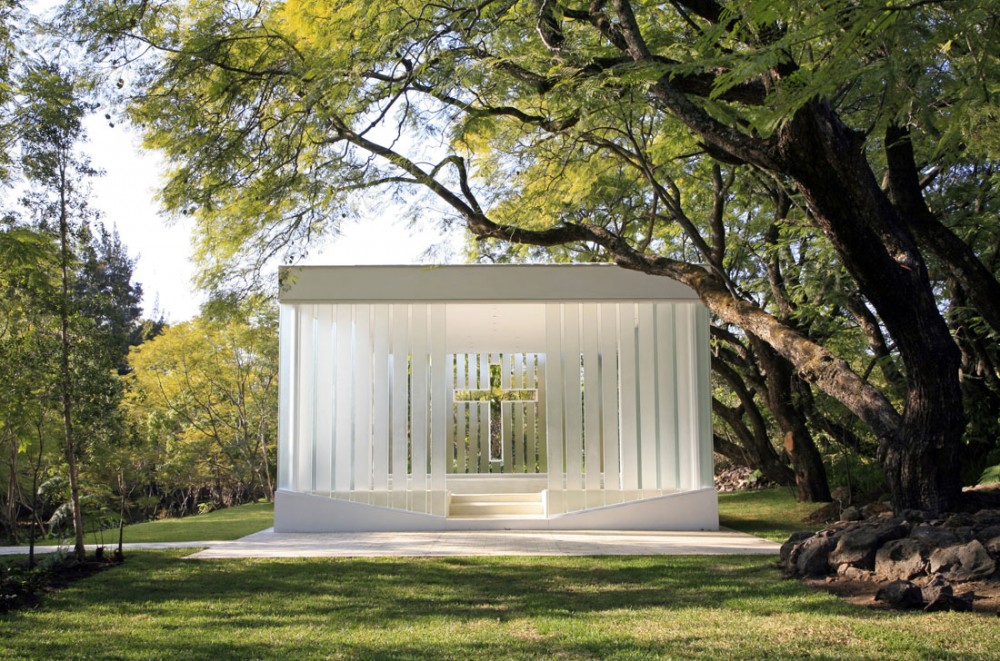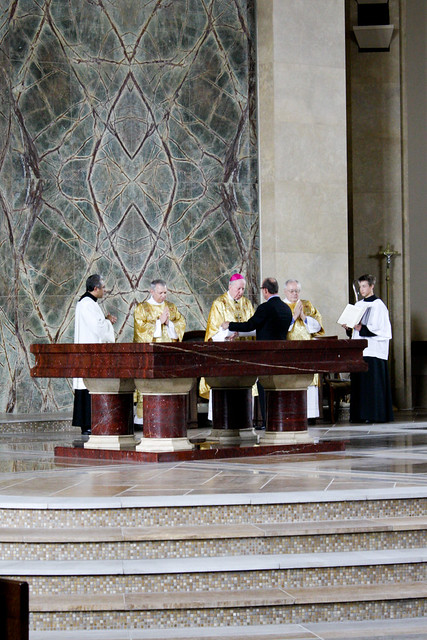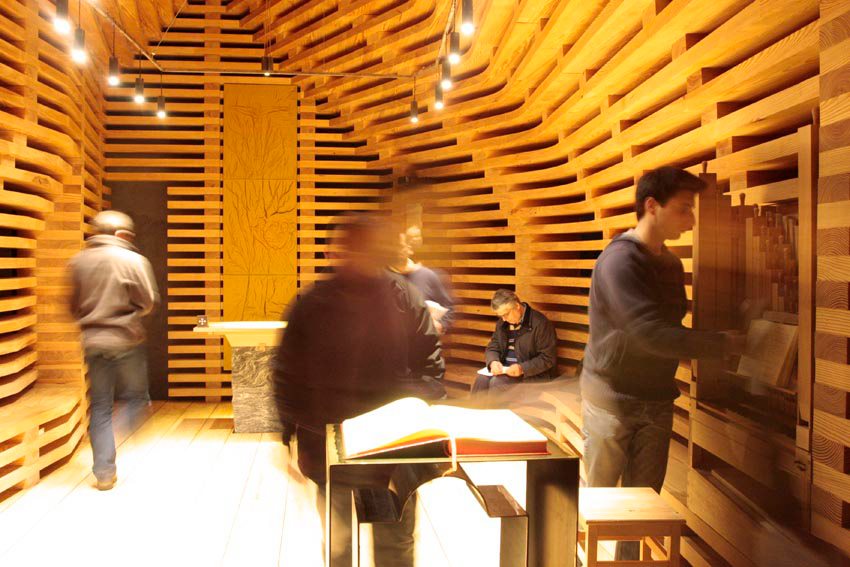Unpaid Architectural Internships: Moral Perspectives from Christianity
/An exploration of the moral implications of unpaid internships and who guild-based apprenticeships could redeem the architecture profession.
Read MoreAn exploration of the moral implications of unpaid internships and who guild-based apprenticeships could redeem the architecture profession.
Read MoreThe unique condition of two cathedrals built in the same city at the same time provides a rare opportunity to compare two built responses to similar criteria.
Read MoreExquisite rendered reconstruction of the Alvar Aalto designed church in Riola di Vergato, Italy. The video highlights the interplay of the space, light, and material by removing everything else.
Read a very nice description of the building here, or check input on the Locus Iste Building Database.
Description and examples of an oft-overlooked feature of church architecture with profound liturgical, formal and symbolic meaning and great design potential.
Read MoreToday is the Feast of St Matthias in the Roman Catholic Calendar (post 1969), the Church of England's Common Worship, and some Lutheran churches. The traditional feast day is 24 February, but in many modern calendars it has been moved to associate it with the Ascension. And because readings from the Acts of the Apostles occur during Easter in many traditions, the story of Matthias' inclusion in the apostles makes sense in this season.
Here is the relevant passage from Acts 1.15-26 (NASB this time):
At this time Peter stood up in the midst of the brethren (a gathering of about one hundred and twenty persons was there together), and said, “Brethren, the Scripture had to be fulfilled, which the Holy Spirit foretold by the mouth of David concerning Judas, who became a guide to those who arrested Jesus. For he was counted among us and received his share in this ministry. ... Therefore it is necessary that of the men who have accompanied us all the time that the Lord Jesus went in and out among us—beginning with the baptism of John until the day that He was taken up from us—one of these must become a witness with us of His resurrection.” So they put forward two men, Joseph called Barsabbas (who was also called Justus), and Matthias. And they prayed and said, “You, Lord, who know the hearts of all men, show which one of these two You have chosen to occupy this ministry and apostleship from which Judas turned aside to go to his own place.” And they drew lots for them, and the lot fell to Matthias; and he was added to the eleven apostles.
Here are photos of St Matthias Abbey, Trier: a minor basilica with the tomb of the Apostle (relocated 12th c).
To celebrate Easter, the website ArchDaily ("the world's most visited architecture website") published three regional round-ups of churches. Ten of the fifteen featured buildings are chapels, a fact that reflects a prevalent bias in architecture for chapels over churches. As I have previously discussed, the reasons for this are many, starting with the fact that chapels tend to be much more expressive, moving, photogenic, and ripe for architectural inspiration. This in turn results from the oft-underestimated difference in programs. The church has far more constraints placed upon by its liturgical, ecclesial, and communal requirements, whereas a chapel is closer to the condition of "pure architecture" or architecture approaching art, driven exclusively by formal experiments in inspiring spiritual/emotional/sentimental reactions. Private chapels also have fewer constituents; they are generally funded by individuals or smaller groups As such they are much more a direct reflection of individualism from the patron(s) and the designer(s). (The exception to this is the campus chapel, which may have far more challenges than a typical parish church.)
Are parish churches disappointing failures if they do not, by formal/artistic architectural standards alone, measure up to the purity and expressivity of these chapels? There are, of course, parish churches apparently more driven by form; one such appears in one of these AD round-ups: Meier's Dio Padre Misericordioso, Tor Tre Teste. And these are far more interesting problem. Does a church like Meier's design achieve its artistic and spiritual aspects in addition to or in spite of the practical and religious? Does a church need to have merit within a design culture that so greatly values individual achievement and innovation for its own sake?
A chapel is much more about its psychological or phenomenological impact, whereas I propose that a parish church should be fundamentally ontological. (Though what exactly that means, what it looks like, and how it is achieved need to be established.) Consider the analogous distinction between private devotion and public service; both are necessary, each in their place. There is a place in a church for devotional images or shrines, but that place is not in the primary focus, just as the various flavors of spirituality supplement and inform the centrality of the liturgy.
Thus the celebrated qualities of the chapels profiled on the following pages should be considered desirable but insufficient to make a fully worthy church. And our greatest task is to have both.
AD Round Up Easter Special: Churches in Latin America

Further news about parish closings (and now reopenings) and additional reflections on the architectural issues raised by the closures in the New York Times and on the Heimsath Architects blog.
Read MoreSurveying the winners of the annual Faith & Form awards with response and analysis.
Read MoreOn the feast day of St Patrick, Archbishop of New York Timothy Cardinal Dolan announced the official launch of a project to restore the historic St Patrick Cathedral in New York City. You can hear audio of the announcement and an unveiling of a sample of the cleaning (see below) via the archdiocese website.

The Cathedral's website demonstrates some of the work to be done:
And of course you can donate to the effort here.
Yesterday, 17 March 2012, the Diocese of Austin celebrated the dedication of its newest parish church. I have published a flickr set of photos from the event including documentation of the interior (exterior photos were posted previously in this construction update).

A critique of the interior and liturgical arrangement & fixtures will follow soon.
The Cyprian frescoes displayed for the past 15 years on the grounds of the Menil Collection are on their way back to Cyprus. When offered the stolen frescoes in a sale, Dominique de Menil instead paid for their recovery on behalf of the Church of Cyprus in exchange for permission to display them for a period of time. That time has now expired and the frescoes have left the purpose-built chapel/museum/reliquary. Read the full story that will air later today on NPR.
We will watch for plans for the building.
The first in a year-long series of articles examining the work and influence of AWN Pugin to celebrate his 200th anniversary of his birth.
Read MoreReview of a Progressive Architecture award-winning small private chapel whose design features a highly successful adaptation of rural vernacular through the subtle manipulation of a re-used quonset structure.
Read MoreA brief examination of buildings and building imagery in the gospels as an investigation into Christ's views on architecture (if any).
Read MoreA new crucifix by Charles Lutyens, currently placed in St Paul, Bow Common, illustrates not only a promising direction for contemporary liturgical art, but also the potential for artworks, buildings, and furnishings to work in concert.
Read MoreMore evidence that the small chapel has more in common with liturgical vestments, furnishings, and artifacts than it does with full-scale churches. This tiny community chapel in Portugal really is a piece of furniture, and it does exemplify one of the tasks of the church building: the unification of all other physical elements required for and desired by the sacraments.

Note the many details where the system of construction breaks away to accomodate everything from a small (wooden) organ, to a stoup, to a book. I do wish the lighting were slightly more integrated with the construction.
Video with commentary (in Portugese):
[youtube_sc url="http://www.youtube.com/embed/4OuBW_MUnlQ" modestbranding="1" autohide="1"]
There is also a time-lapse video of the construction:
[youtube_sc url="http://youtu.be/3GMqCaa9iJQ" modestbranding="1" autohide="1"]
A preliminary proposal for a very succinct method for adding a use-based typology of Liturgical Arrangements to existing stylistic descriptions.
Read MoreA cause for celebration. The new convent at Notre Dame du Haut, Ronchamp (sans its final landscaping) had its grand opening celebration in early September.
Read MoreFor anyone who is in New York (or can easily make it there in November), I highly recommend checking out this conversation sponsored by The Society for the Arts, Religion and Contemporary Culture. The now 50 year old Society combines an emphasis on religion and the arts without selling either short, a rare feat indeed. And their list of fellows reads like an impressive who's who in these overlapping realms in the 20th century. A description of the event follows.
---
To observe its 50th year, The Society for the Arts, Religion and Contemporary Culture is sponsoring a significant conversation on INTERSECTIONS of religion and the arts on November 11-12, 2011. The location is St. Peter’s Lutheran Church, Lexington at 54th St. in NYC, a place noted for its architecture and its artistic elements and early location of the Society’s activities.
Some highlights of the event include:
Register now at www.sarcc.org for discounted fee. For inquiries, nlvos@enter.net.
Shigeru Ban designs another paper structure for the aid of natural disaster victims, this time a Cathedral in Christchurch, New Zealand.
Read More